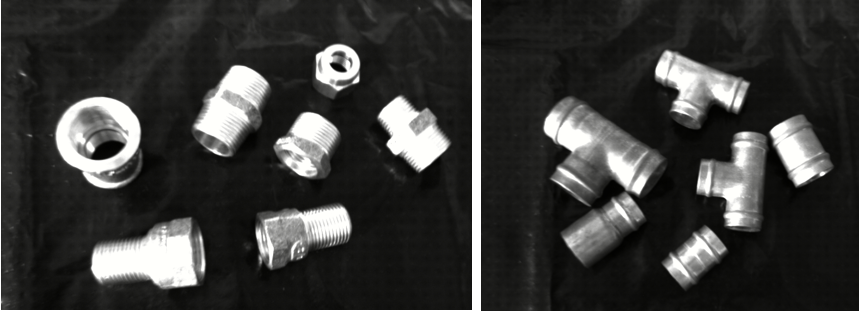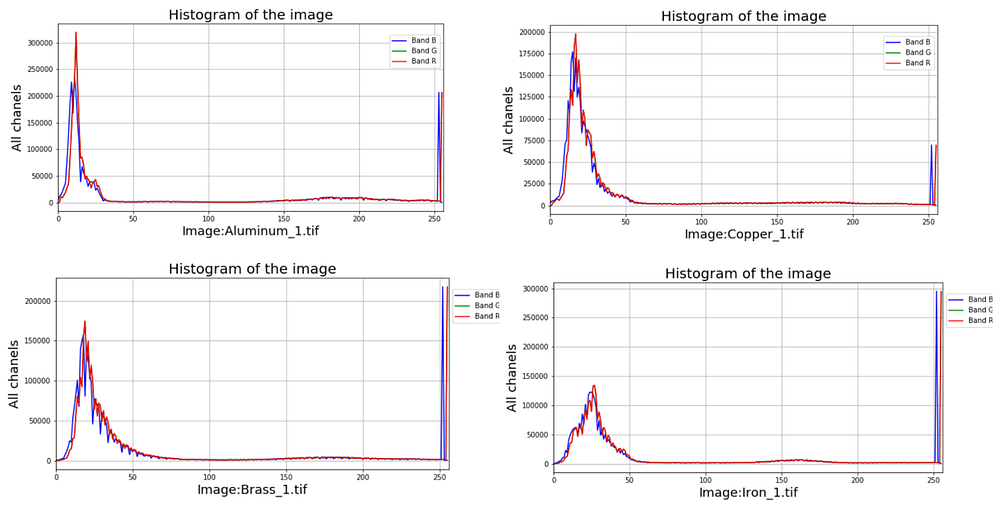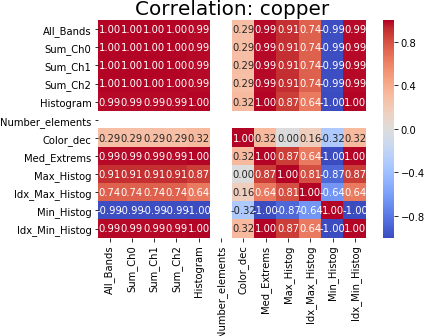Steel is the world’s most important engineering and construction material. It is used in every aspect of our lives. There are more than 3,500 different grades of steel with many different physical, chemical, and environmental properties. The European environmental initiative on raw materials (Council, European Parliament and, 2003) has recently promoted the efforts in recycling and recovery of metal alloys. I used spectral images of scrap steel to make an efficient classification using Machine Learning techniques.
The materials used were aluminum, brass, copper, iron, stainless steel, and painted iron materials to obtain multi-spectral images. The used equipment is a multi-spectral machine, ADC Lite. The ANACONDA framework was installed to use Jupyter with Python programming. The exploration of the bands of the images focuses on the analysis of the matrices of the images, in order to obtain classification parameters for the different materials.
The classification of scrap metal is a very economically relevant task,
both for society and for the industrial area. Although scrap is a waste society or industrial area, is a valuable product. We also have the issue management of solid waste from metal products at the end of life, which is an objective of all citizens and has specific incentives for some European projects.For the steel industry, the cost of producing steel from scrap is much lower than steel from primary raw materials (iron ore). These companies use the scrap as an alternative to increasing their production volumes, reduce fixed and even variable costs since, in general, scrap is a source of metal economically advantageous, especially in regions where energy costs are very high, for example, in the United States and Europe.
The transformation of the RGB bands of an image into matrices and lists allows an approach with Machine Learning, and the differences between the spectral bands of the different materials can be exploited mathematically. Several libraries available for image processing allow exploration at the level of the representative matrices of an image, its color and the reflectance as exposed to the incidence of light.
The ANACONDA framework was installed for use by Jupyter with programming in Python. The exploration of the bands of the images focuses on the analysis of the images, in order to obtain the classification parameters for the different materials. Other approaches could be to use Google Collaboratory, which provides a virtual machine Python in the cloud and already incorporates an environment with GPU. For applied techniques, it was necessary to install Python libraries, such as: PILLOW, OPENCV, OPENPYXL, COLORMATH, WEBCOLORS, NUMPY and MATPLOTLIB. These libraries provide a set of facilities that allow us to analyze different issues and develop a specific approach to each problem.
Conclusions:
It is possible to classify metals using ML techniques, as described. Other technical issues like correct scrap viewing; an environment with rain protection; and light suitable for capturing images, should be observed. In an industrial environment, we have service routines intense and high-speed equipment. High levels of dust, noise, and vibration are common in these environments and need to be considered in a future prototype application.
References
Research is done by the author. Work developed for a Position Paper, university master’s work.
Diretiva 2012/29/UE do Parlamento Europeu e do Conselho, de 25 de outubro de 2012, Council, European Parliament and. (2003). WEEE Directive 2002/96/EC. Eionet — Reporting Obligations Database. Source: http://ec.europa.eu
TETRACAM. ADC Lite. Source: www.tetracam.com
https://medium.com/datadriveninvestor/using-machine-learning-to-scrap-metal-classification-5458eb6ddfc9




Sem comentários:
Enviar um comentário